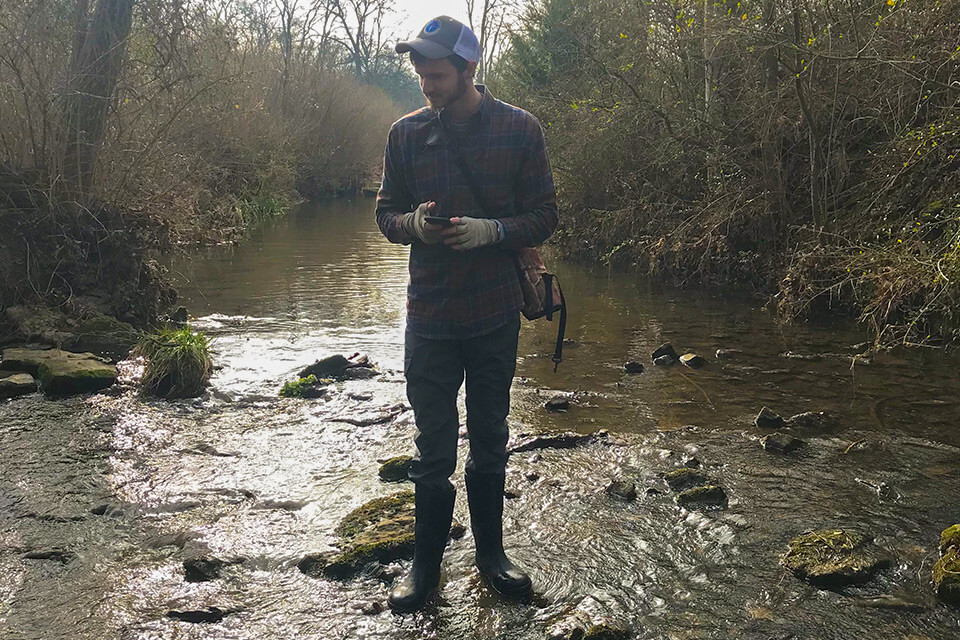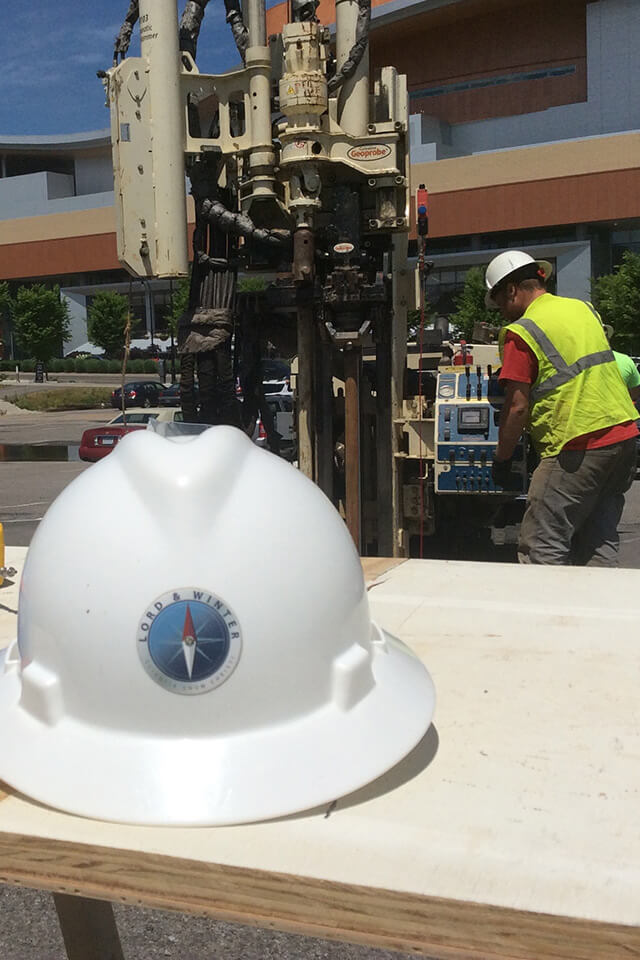Environmental Site Assessments
When making a commercial real estate transaction, it’s crucial to gather as much information as possible about the risks the site might present. To properly evaluate the site, you will need to have a qualified environmental professional perform a Phase 1 Environmental Site Assessment or ESA.
Phase I ESAs, which lenders almost always require before financing a commercial real estate purchase, provide you with the information needed to gauge potential environmental hazards. This data can help you negotiate a fair price and protects you under federal law as established by the US Environmental Protection Agency (EPA).
At Lord & Winter, we have more than 30 years of field experience and are committed to providing our partners with accurate, reliable Phase 1 environmental reports. We combine our passion for details with thorough technical training and knowledge to produce high-quality results with a quick turnaround time. When you partner with Lord & Winter for your Phase 1 Environmental Site Assessment, you can rest assured that we will go above and beyond due diligence, ensuring you get the information you need when you need it.
What Is a Phase 1 Environmental Site Assessment?
Any time you lease, purchase, or sell property, you need to know its environmental state. Any contamination in the soil or groundwater can negatively impact the health and safety of people using that property and, thus, the property's value.
A Phase 1 Environmental Site Assessment is part of the due diligence required by lenders. The Phase 1 Report identifies potential risks from contamination that could impact the buyer or the seller. Any contamination could lower the property’s value and require expensive remediation to make it suitable for commercial, industrial, or residential purposes.

Phase 1 Environmental Reports are based on standards set by the American Society for Testing and Materials (ASTM), specifically standard E1527-13, which follows EPA regulations. The ASTM standard defines the Recognized Environmental Conditions (RECs) that may be present in a property.
A Phase 1 Environmental Site Assessment aims to determine if any of these RECs are present and if further examination is required. RECs can include current and future environmental risks, even if those risks are currently within legal bounds.
Do I Need a Phase 1 Environmental Report?
Do you fit one of the following categories:
- Purchasing undeveloped land
- Purchasing an existing building
- Purchasing an existing business
- Leasing a building or property
- Building a new residential development
- Buying a home near a commercial property, including service stations
- Pursuing a bank loan for property purchase or improvement
If you fall into one or more of these categories, you should invest in a Phase 1 Environmental Report before taking possession of the property. Not only does this protect you from overpaying for the property, but it can guard you against future lawsuits.
As a result of Superfund legislation enacted in the 1980s (also known as CERCLA), a property owner can be found liable for contamination that emanates from their holdings.
However, property owners can claim the “innocent landowner defense” if they can prove they purchased the property without knowledge of contamination — established with a valid Phase I ESA.
Performing a Phase 1 Inspection
Research
The research phase of your environmental inspection takes a deep look at the property’s history. Depending on the site, this could be a rapid and easy process or involve extensive research from your environmental professional. Some of the documents and other materials that your professional will look at include:
- Aerial photographs
- Topographical maps
- Sanborn fire maps
- All previous building permits
- Previous environmental reports
- City Directories Previous property titles
- Archival tenant records
- Any existing documentation of hazardous materials
- Architectural site plans
These are only some of the documents that your environmental inspector will consider. They may discover more resources that speak to potential hazards at the site. While this prospect may be intimidating, it is better to know beforehand to avoid more problems later.
Site Visit
The second half of a Phase 1 inspection is the site visit. During this portion, the inspector will physically assess the property and the surrounding area. This investigation will help clarify the property’s current conditions and document previously unknown factors. Site inspection includes:
- Evaluating current operating conditions
- Photographing the area with detailed descriptions
- Inspecting any on-site documentation, including SDSs
- Visiting nearby properties to assess their risk
- Interviewing neighbors about the property in question
- Speaking with current owners/occupiers
- Getting material from local agencies, including health and fire departments
Site visits can take some time, but they provide essential information to corroborate or dispute the information gleaned from other sources.
Generating a Phase 1 Environmental Report
Once both parts of the inspection are complete, Lord & Winter will provide a comprehensive report detailing our findings. This fully accounts for any potential hazards we may have identified and whether we recommend a Phase II Environmental Site Assessment.
The process of generating your Phase I report, including research and site visit, will be completed within ten business days. This tight timeline allows you to rapidly access the supporting documentation you need when attempting to conclude time-sensitive transactions.
Factors Affecting the Cost of a Phase 1 Environmental Report

Location
Depending on the site’s location, there may be added costs for transportation, especially in more remote areas where travel is more challenging.
Property Size
The larger the property, the more time and effort it takes to conduct the environmental assessment. However, even small parcels can cost more if there is a remarkably complex development.
Current State
Undeveloped properties are typically the easiest to assess. However, developed properties have often been through several iterations, and we need to investigate each previous use. Such history increases the likelihood that an undisclosed hazard may exist.
Common Problems Identified in Phase 1 Inspections
While each site is unique, there are some common RECs that environmental professionals frequently encounter. These RECs usually involve previous businesses and activities on the property, including:
- Dry cleaning
- Manufacturing
- Service stations
- Automobile repair
- Industrial production
- Refining Gas and oil wells
- Prior agricultural activity
- Underground storage tanks
- Aboveground fuel storage
While each of these factors can indicate a REC, the duration of the activity is also paramount. Example: If a site previously housed an auto repair shop, the environmental impact could be vastly different depending on whether it was operating for ten years or ten months. The longer the site was in operation, the more likely a REC exists, which may require a more in-depth examination known as a Phase II Environmental Site Assessment.
Duration of a Phase I ESA Report
According to ASTM E-1527-13, a Phase I Environmental Site Assessment is valid for one year, with an updated report needed after 180 days in several cases. For the most part, lenders hold to the ASTM standard.
While there may be cases when an out-of-date Phase I ESA would be accepted, it is generally best practice to ensure that you have a fully updated report before taking possession of a property, whether buying or leasing. That way, you can ensure that you will not be held liable if any environmental contamination is discovered later on.
Phase II Environmental Site Assessments
Unlike a Phase I ESA, which looks at the potential environmental risks at a site, a Phase II Environmental Site Assessment involves subsurface testing and investigating soil, groundwater, and soil vapors for the presence of contaminants.
This detailed testing should help you determine whether your site is currently contaminated and whether you may need to consider further clean-up efforts after purchase. With extensive training and experience in the field, Lord & Winter can help identify the scope that best suit’s your assessment needs and ensure accurate Phase II testing.
Partner with Lord & Winter for Your Phase I ESA
Partner with Lord & Winter for Your Phase I ESA Before you complete your next real estate transaction, contact the experts at Lord & Winter to ensure you know everything about the property you are purchasing. Our staff is ready to provide you with the Phase I ESA you need to feel confident about your transaction, and we offer reliance letters for lenders at no extra cost.
With offices in Nashville, Baton Rouge, New Orleans, Austin, and Duluth, Lord & Winter is here to provide you with the technical assistance you need to comply with EPA regulations.
We are among the fastest firms in the industry, with our average Phase I ESA turnaround time at ten business days so that we can meet the tight deadlines real estate transactions often face.
Whether you are looking for a new Phase I Environmental Site Assessment or need another service, such as an environmental permit or remediation, Lord & Winter can provide the services you need.
Contact us today for more information about the environmental support we offer to get your project going!

